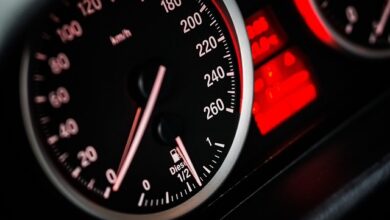What Does Third-Party Fire and Theft Insurance Cover in the UK?

Introduction
When it comes to car insurance in the United Kingdom, drivers have several options to choose from, depending on their needs and budget. One of the most basic levels of coverage is Third-Party Fire and Theft Insurance , which is often selected by drivers looking for affordable protection while meeting legal requirements. However, understanding exactly what this type of policy covers—and what it doesn’t—is crucial to ensuring you’re adequately protected on the road.
In this article, we’ll break down everything you need to know about Third-Party Fire and Theft Insurance in the UK, including its key components, limitations, and whether it’s the right choice for you.
What Is Third-Party Fire and Theft Insurance?
Third-Party Fire and Theft Insurance is a step up from the minimum legal requirement of Third-Party Only Insurance . While Third-Party Only covers damage or injury you cause to others, Third-Party Fire and Theft adds two additional protections:
- Fire Damage : Covers your vehicle if it’s damaged or destroyed by fire.
- Theft : Covers your vehicle if it’s stolen or damaged as a result of an attempted theft.
This type of insurance is designed to provide slightly more peace of mind than Third-Party Only, but it still falls short of offering comprehensive protection for your own vehicle.
Key Components of Third-Party Fire and Theft Insurance
Let’s explore each element of this policy in detail:
1. Third-Party Liability
This is the foundation of all car insurance policies in the UK and is required by law. It covers:
- Damage to Other Vehicles : If you’re at fault in an accident, your insurer will pay for repairs to the other driver’s car.
- Injury to Others : Covers medical expenses or compensation for injuries caused to pedestrians, passengers, or other drivers.
- Property Damage : Includes damage to property such as fences, walls, or lampposts that you accidentally hit.
However, it does not cover any damage to your own vehicle or injuries to yourself.
2. Fire Damage
If your car catches fire due to:
- Vandalism
- Electrical faults
- Accidents (e.g., a collision that leads to a fire) your insurer will cover the cost of repairs or compensate you for the total loss of the vehicle.
3. Theft
This part of the policy protects you if:
- Your car is stolen and not recovered.
- Your car is damaged during an attempted theft (e.g., broken windows or forced locks).
If your vehicle is stolen, you’ll need to report it to the police and obtain a crime reference number before filing a claim with your insurer.
What Isn’t Covered by Third-Party Fire and Theft Insurance?
While Third-Party Fire and Theft Insurance provides some additional protection compared to Third-Party Only, it has significant limitations. Here’s what it does not cover :
- Damage to Your Own Vehicle
- Any damage to your car resulting from accidents, collisions, or vandalism is not covered unless it involves fire or theft.
- Personal Injury
- Injuries sustained by you or your passengers are not included unless they were caused by another driver who is at fault.
- Replacement Costs for Stolen Items
- If items inside your car (such as a phone, laptop, or stereo system) are stolen, they won’t be covered.
- Natural Disasters
- Events like floods, storms, or falling trees are typically excluded from this type of policy.
- Mechanical Failures
- Routine wear and tear, mechanical breakdowns, or manufacturing defects are not covered.
- Unattended Theft
- If your car is stolen because you left the keys in the ignition or failed to secure it properly, your claim may be denied.
Who Should Consider Third-Party Fire and Theft Insurance?
Third-Party Fire and Theft Insurance is best suited for drivers who:
- Own Older or Lower-Value Vehicles : If your car isn’t worth much, paying for comprehensive insurance might not make financial sense.
- Are on a Tight Budget : This policy tends to be cheaper than fully comprehensive insurance, making it attractive to cost-conscious drivers. -want minimal coverage that meets legal requirements while adding a small layer of protection against fire and theft.
However, it’s important to weigh the risks carefully. If your car is newer, expensive, or essential for daily life, opting for a more robust policy—such as Fully Comprehensive Insurance —may be a better choice.
How Much Does Third-Party Fire and Theft Insurance Cost?
The cost of Third-Party Fire and Theft Insurance varies based on several factors, including:
- Driver Profile : Age, driving history, and experience impact premiums.
- Vehicle Type : High-performance or luxury cars are more expensive to insure.
- Location : Urban areas with higher crime rates tend to have pricier policies.
- Security Features : Cars equipped with alarms, immobilizers, or tracking devices may qualify for discounts.
- No-Claims Bonus : A history of claim-free years can reduce your premium.
On average, Third-Party Fire and Theft Insurance costs between £200 and £500 annually , though prices can vary widely.
Pros and Cons of Third-Party Fire and Theft Insurance
Pros:
- Meets the legal minimum requirement for car insurance in the UK.
- Offers basic protection against fire and theft.
- Typically more affordable than Fully Comprehensive Insurance.
- Suitable for older or low-value vehicles where extensive coverage isn’t necessary.
Cons:
- Provides limited protection; excludes many common risks like accidents and vandalism.
- Leaves you financially responsible for repairs to your own vehicle.
- May not be sufficient for newer or high-value cars.
- Claims for theft can be complex and require proof of negligence-free security measures.
Alternatives to Third-Party Fire and Theft Insurance
If you’re considering Third-Party Fire and Theft Insurance but feel it might not offer enough protection, here are some alternatives:
1. Fully Comprehensive Insurance
- What It Covers : In addition to third-party liability, fire, and theft, it also covers damage to your own vehicle, regardless of fault.
- Best For : Drivers with newer, more valuable cars or those seeking maximum peace of mind.
2. Telematics Insurance
- What It Covers : Similar to standard policies but uses a black box or app to monitor driving behavior, potentially lowering premiums for safe drivers.
- Best For : Young or inexperienced drivers looking to save money.
3. Pay-As-You-Go Insurance
- What It Covers : Flexible coverage tailored to occasional drivers, charged based on usage.
- Best For : Part-time drivers or those who rarely use their vehicles.
Tips for Maximizing Your Third-Party Fire and Theft Policy
To get the most out of your policy and avoid unexpected surprises, follow these tips:
- Secure Your Vehicle : Install anti-theft devices like steering wheel locks, immobilizers, or GPS trackers to deter thieves and qualify for discounts.
- Park Safely : Always park in well-lit, secure areas to reduce the risk of theft or fire.
- Review Your Policy Regularly : As your circumstances change (e.g., moving to a safer area or upgrading your car), reassess whether Third-Party Fire and Theft still meets your needs.
- Understand Exclusions : Read the fine print to know exactly what’s covered and what’s not.
- Shop Around : Compare quotes from multiple insurers to ensure you’re getting the best deal.




